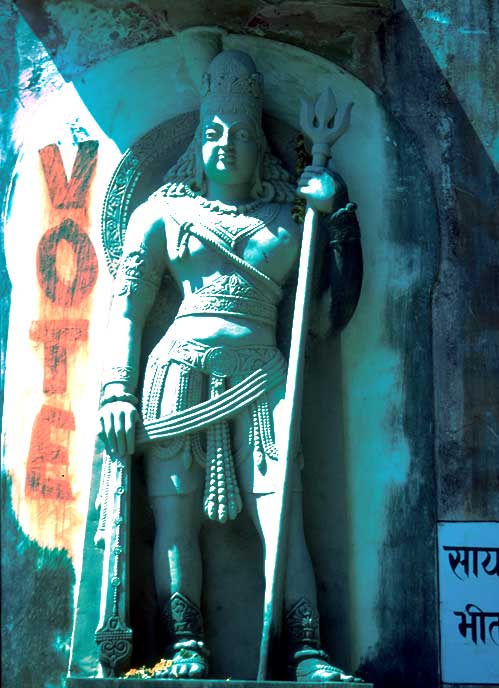

"It is not possible to define Indian civilization (including the Muslims, who also possess a beautiful mystic tradition) only, as is the custom in the West, through its religious and ascetic side. Gandhi was a true hero and a saint, but neither sanctity nor chastity define India. The aspara and the yakshi even the balance: physical beauty also possesses a force that is, in its way, a spiritual magnetism. The Indian people are neither resigned nor ascetic. They have often been violent, and sensuality is a prominent feature in their art and customs. Passivity and asceticism are one side of the coin. Passivity is also a form of active love; asceticism is, in itself, eroticism and often violence; Krishna, Shiva, Durga are gods in love and in combat. The Indian genius is a love for abstraction and, at the same time, a passion for the concrete image. At times it is rich, at others, prolix. It fascinates us and tires us. It has created the most lucid and the most instinctive art. It is abstract and realistic, sexual and intellectual, pedantic and sublime. It lives between extremes, rooted in the earth and drawn to an invisible beyond. On the one hand, a repetition of forms, a superimposition of concepts, a syncretism. On the other, the desire for totality and unity. And in its highest moments: the incarnation of a totality that is plenitude and emptiness, the transfiguration of the body into form that, without abandoning sensation and the flesh, is spiritual."
-Octavio Paz
Despite India's problems, it is a nation striving for democratic ideals. It has a very free press, many bright young people and manages to feed her population of one billion without relying on imports. On the grounds of Benares University, this guardian stands outside the confines of a Hindu temple which, unlike the majority of temples in Varanasi, is open to people of all faiths. It was designed after the original Vishwanath Temple which was destroyed by Aurangzeb over 300 years ago. Notice the marigolds offered at the feet of the statue.
TURTLE HILL © 2000